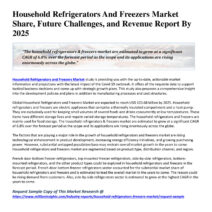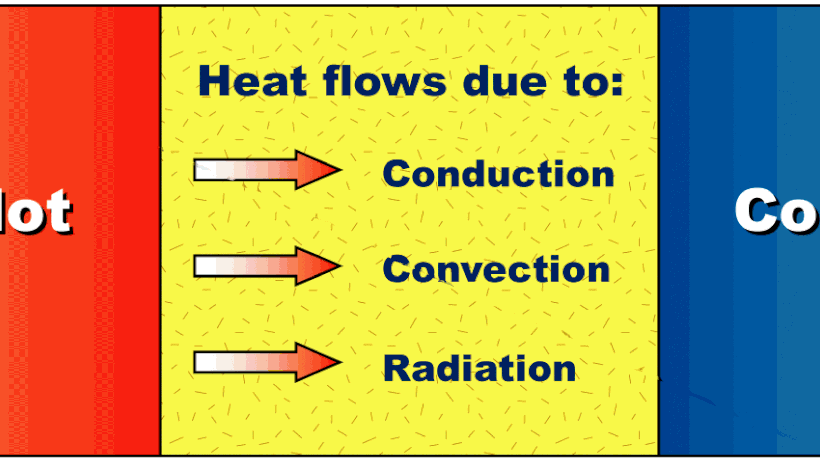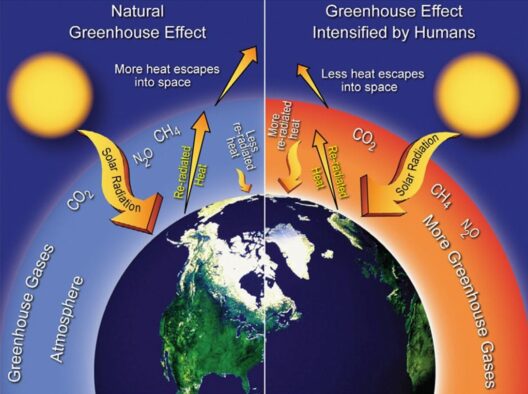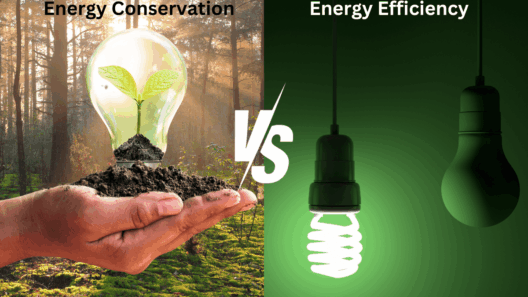Heat preservation and energy conservation are inexorably linked, with the transfer and management of thermal energy often serving as a pivotal feature of sustainable practices. Understanding the mechanisms that underpin these processes reveals not only the intrinsic beauty of thermodynamics but also its essential relevance to contemporary environmental challenges.
At its core, heat energy is akin to a river, flowing through the confines of our physical world. Like water carving its path through rock, heat transfers through materials by various means: conduction, convection, and radiation. Each of these modalities can be envisioned as tributaries feeding into this central river, contributing to the process of energy conservation in multifaceted ways.
The first tributary, conduction, occurs at the microscopic level. Imagine a bustling dance floor, where each dancer represents an atom. When one dancer (an atom) in a tightly packed crowd jiggles due to heat, they nudge their neighbor, passing on energy in the form of kinetic energy. This transmission occurs in solids where particles are closely linked, allowing them to communicate through vibration. Conduction is the primary mode through which heat diffuses, and understanding its mechanics is crucial for enhancing energy efficiency in buildings, where heat loss can be dramatically curtailed through the use of insulating materials.
Consider thermal insulation as the ballroom’s velvet ropes, preventing energetic dancers from spiraling into the chaos of the outside environment. Insulating materials, such as fiberglass or foam, effectively slow the flow of heat, capturing warmth in the winter and keeping cool air trapped in the summer. This dynamic allows for the judicious use of energy resources, illustrating how the careful management of heat not only enhances comfort but substantially reduces energy consumption.
As we delve further into the stream of heat transfer, we encounter convection, another vital process. This phenomenon resembles the flowing currents in a river, where water circulates and facilitates the exchange of heat throughout a body. In convection, fluids—either liquids or gases—carry heat by rearranging their molecules in response to temperature changes. Warmer, less dense areas of fluid rise, while cooler, denser areas sink, creating a circular flow. This cycle is harnessed in numerous applications, from heating systems to natural ventilation.
In terms of environmental advocacy, the implications of convection are significant. From energy-efficient HVAC systems that optimize air circulation to passive solar heating designs utilizing natural convection currents, integrating these principles into urban architecture can mitigate energy demands considerably. By embracing the natural movements of heat, society can cultivate a more sustainable future, inching closer to the serene equilibrium nature intends.
As we explore further downstream, we arrive at radiation—the radiant energy emitted from all objects based on their temperature. Unlike conduction and convection, which require a medium for heat transfer, radiation communicates through empty space, akin to sunlight reaching the Earth. This kind of energy transfer is vital in numerous applications, especially when discussing solar energy—a renewable source that has the potential to dramatically reshape energy landscapes.
Most notably, photovoltaic cells, which harness sunlight, exemplify the extraordinary potential of thermal radiation. By converting solar radiation into usable electric energy, these technologies encapsulate the essence of conserving energy while simultaneously harnessing it from a sustainable source. Transitioning our energy infrastructures to rely more heavily on solar power can yield considerable benefits, both economically and environmentally, reducing burns of fossil fuels while promoting climate resilience.
However, the thermal connection does not exist in isolation. To fully appreciate how heat conserves energy, we must consider its role within the larger tapestry of sustainable practices. The efficient use of thermal energy is an essential adjunct to clean energy initiatives. As the proverbial saying goes: “A stitch in time saves nine.” By making minor adjustments in how we harness and preserve heat, we can save significantly on energy consumption and CO2 emissions.
Moreover, with the looming specter of climate change, heat conservation takes on an urgent significance. The consensus among climate scientists is unabashedly clear: we must transition towards a low-carbon future. Key strategies include increasing energy efficiency in buildings—where heating and cooling represent a substantial portion of energy expenditure—and implementing smart technologies that dynamically manage thermal energy. These measures not only lower energy bills but also contribute to the global fight against climate change.
To cultivate a conscientious approach to thermal energy management, it is essential to foster public awareness, education, and engagement. Communities can be encouraged to implement energy audits, assess insulation levels, and consider retrofitting homes with more effective heating systems. When individuals comprehend the nuances of thermal dynamics, they become empowered advocates for sustainable practices, championing energy conservation within their households and broader communities.
In closing, the intricate connection between heat and energy conservation is as profound as it is essential. Just as a river flows to enrich the landscape it traverses, so too does thermal energy manage and sustain life. By understanding and harnessing these dynamics through the principles of conduction, convection, and radiation, society can leverage heat with intelligence and creativity. As custodians of our planet, adopting such measures is critical to fostering a harmonious coexistence with nature and ensuring a sustainable future for generations to come.







